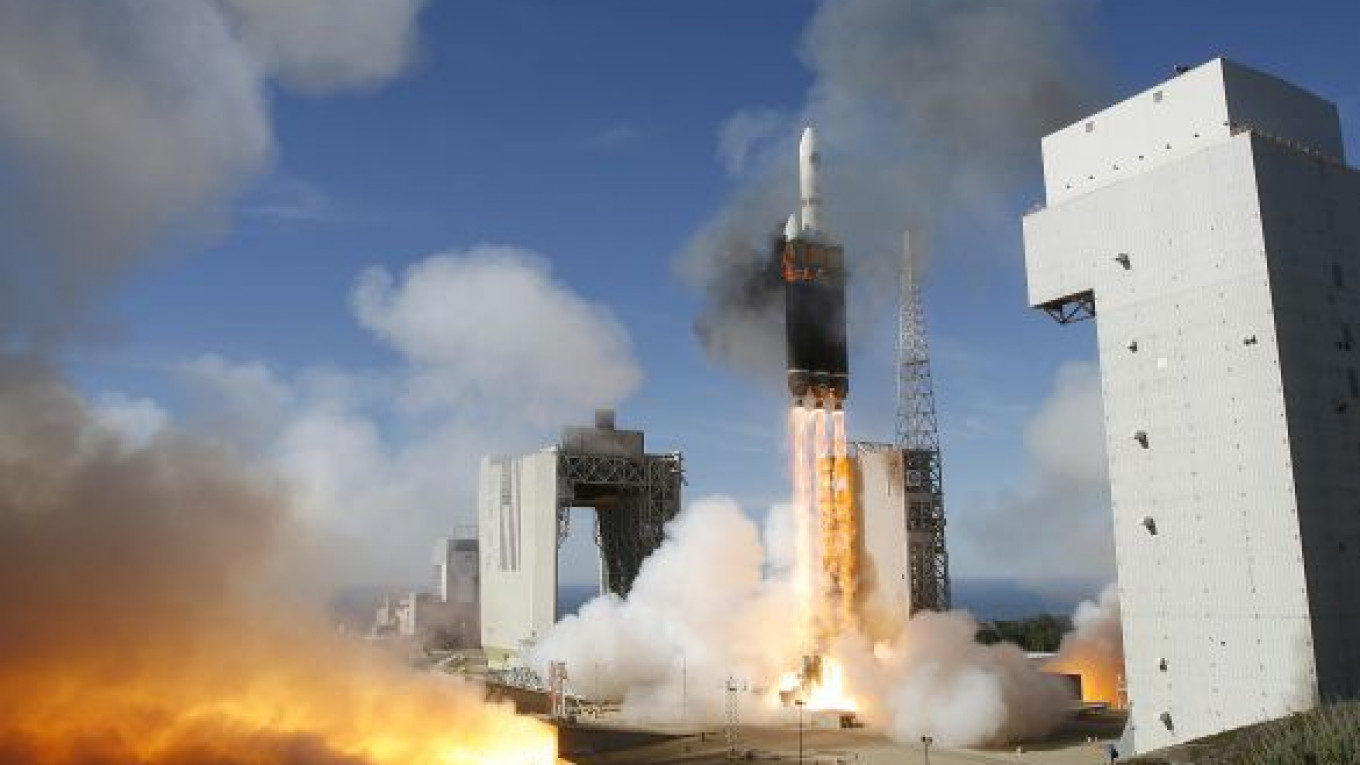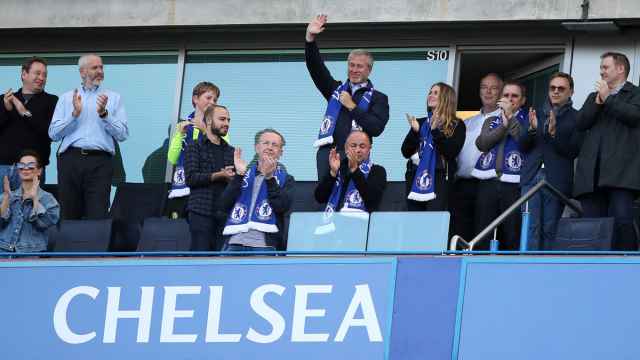WASHINGTON — As it turns 50, the ultra-secretive National Reconnaissance Office is putting a multibillion-dollar misstep behind it and casting its spy satellites on new enemies, from al-Qaida bomb planters to North Korean nuclear engineers, its chief said.
The agency has launched six satellites in seven months, "the best we've done in about 25 years," said director Bruce Carlson, listing what he saw as milestones during rare comments to reporters late last week.
The NRO was founded during the Cold War on Sept. 6, 1961, to spy on the Soviet Union, China and others. Today it operates satellites to spot roadside bombs in Afghanistan and still spies on Russia and China.
Data gathered from the NRO's Gorgon Stare surveillance satellites — named for the mythological gaze that could turn a person to stone — were hailed as key to helping plan the Navy SEAL raid against Osama bin Laden and to guiding NATO and rebel forces in Libya, Carlson said.
Carlson, a former Air Force general, was blisteringly blunt about the NRO's recent mistakes — namely, how it ran up a multibillion-dollar bill trying to develop the failed "Future Imagery Architecture" satellite program. FIA, as it was known, was supposed to create a new generation of smaller, cheaper optical and radar satellites.
Instead, the Boeing program never took off, literally. Carlson called it "a colossal failure," but, without going into details, he said the program was now "back on track."
FIA happened before Carlson's watch, but the lesson stuck. U.S. intelligence officials say he is equally blunt with contractors he now manages. Where they used to be allowed to lag on delivering new technology, Carlson threatened to cancel contracts and walk away, said one U.S. intelligence official, speaking on condition of anonymity to discuss intelligence matters.
When Carlson first delivered some of his missives, "jaws dropped," the official said. And behavior changed.
Even a couple of years ago, more than 30 percent of all NRO contracts were performing poorly, Carlson said, but now all are "on contract and on price."
Carlson is already war-gaming what he'll cut if Congress slashes his annual budget, saying he'll sacrifice operations and maintenance to keep the same number of staff on board, and protect the forward-looking science and technology research that works on next-generation satellite equipment and the futuristic equipment the satellites carry.
"We were going to protect our people, the core people of our mission," Carlson said. And the agency's learned to make do, he said.
"We've got satellites up there that are remarkably old, over a decade old, that were only supposed to live for three or four years," that were designed to collect Soviet communications during the Cold War, Carlson said. "Now they are collecting phone calls or push-to-talk radio signals out of the war zone."
Those signals are used to "geo-locate" the sources of threats. One key NRO program, called Red Dot, is focused on finding improvised bombs, primed to attack U.S. troops in the war zone.
Red Dot works by monitoring Afghan roadways for the electronic signals given off by the transmitters meant to trigger the explosives. Those signals are married up "within minutes" to other intelligence streams, from observation blimps, drones and spy planes. The same technology is being used to hone in on radios used by the Taliban, to narrow their location to an accuracy of just meters, Carlson said.
Carlson said the Red Dot program, in place for about six months, is "about 80 percent effective" in spotting the bombs.
"Even though we still have an unacceptable loss," due to the improvised explosive devices, or IEDs, "we're catching a lot of them," he said.
The NRO's core mission remains spotting long-term threats, like trying to figure out just how far along North Korea's nuclear program has come.
"They are very clever," Carlson said. "They work very hard to deceive us."
The Russians and Chinese present the greatest challenge to U.S. superiority in space, launching so many satellites that low Earth orbit is getting crowded, and that could lead to conflict, Carlson said.
China's "military philosophy goes back to 4,000 years ago," he said. "They believe in deception. My main concern is their intent."
Just in case that intent isn't friendly, Carlson said he wants to build new satellite systems so they can look sideways and out into space, as well as down onto the Earth, so they can react to any new threats in space, in case the game changes between the players on the ground.
A Message from The Moscow Times:
Dear readers,
We are facing unprecedented challenges. Russia's Prosecutor General's Office has designated The Moscow Times as an "undesirable" organization, criminalizing our work and putting our staff at risk of prosecution. This follows our earlier unjust labeling as a "foreign agent."
These actions are direct attempts to silence independent journalism in Russia. The authorities claim our work "discredits the decisions of the Russian leadership." We see things differently: we strive to provide accurate, unbiased reporting on Russia.
We, the journalists of The Moscow Times, refuse to be silenced. But to continue our work, we need your help.
Your support, no matter how small, makes a world of difference. If you can, please support us monthly starting from just $2. It's quick to set up, and every contribution makes a significant impact.
By supporting The Moscow Times, you're defending open, independent journalism in the face of repression. Thank you for standing with us.
Remind me later.






